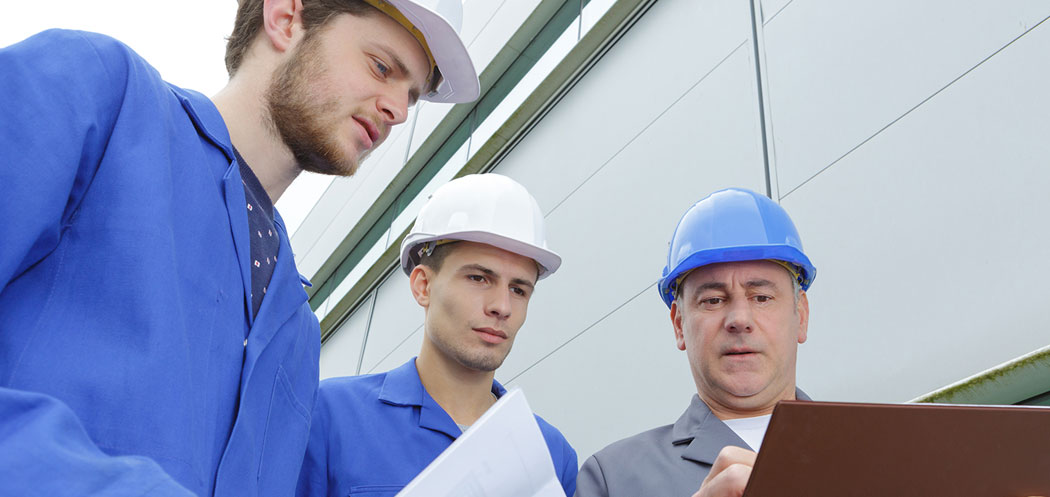
SPONSORED
How to Get the Best Rooftop Fall Protection for Manufacturing Facilities
- By Paul Sperling
- May 04, 2021
Falls are often the biggest safety risks when it comes to occupational injuries in manufacturing plants. According to the National Institute for Occupational Safety and Health (NIOSH), falls, trips and slips are among the main causes of occupational injuries. So elevated working areas and rooftops call for suitable fall protection solutions, practices, and training.
While solution options may differ, metal guardrails are going to be part of nearly every facility’s fall protection, and non-penetrating safety railing often offers the best rooftop fall protection for any manufacturing facility.
Safety Statistics in the Manufacturing Industry
Accidents are bound to happen in any manufacturing plant. The fiscal year 2018 saw OSHA levying at least $38 million in fines to manufacturing companies for going against safety requirements. About four out of every 100 full-time workers experienced an injury or illness in the workplace. Falls were among the main causes of days away from work, as well as for the most serious injuries.
These data points further prove the need for fall protection on work sites, and adherence to OSHA requirements and guidelines especially in the manufacturing sector.
The OSHA Basics
As a business owner, you’re already (or should be) aware of the OSHA 1910.28 requirement – “the employer must ensure that each employee on a walking-working surface with an unprotected side or edge that is 4 feet (1.2 m) or more above a lower level is protected from falling.” In order to ensure this, you may need to install passive (think guardrails) or active (think anchorage points, safety harnesses, and lanyards) fall protection equipment to meet these guidelines.
Guardrails and their OSHA Requirements
Ideally, your safety railing choice will not only be OSHA compliant, it will also be the best all-around solution for your facility’s needs. With the best roof guardrails, you may be able to fully meet requirements for fall protection without the need for any extra equipment or processes. When making your choice, be sure to consider compliance with OSHA regulations, the railing baseplates’ weight, ease of installation/replacement, and possible roof damage.
Before purchasing and using any fall protection for your rooftops and work sites, first go through OSHA’s requirements regarding the issue. You don’t want to purchase and install a safety system which turns out not to be compliant after all! In brief, these regulations stipulate:
- The guardrails’ top edge should be 42” plus or minus 3” above the walking or working level for maximum protection.
- They should be strong enough to endure a 200 lb. force from both a downward and outward direction.
- The top and mid rails should be at least 1/4” think – installing thin materials runs the risk of laceration.
- Avoid materials and surfaces that have rough or jagged edges – you don’t want the employees’ hands or clothes to snag.
Why Choose Portable, Non-Penetrating Safety Railings?
There are many reasons that portable guardrails might be the best rooftop fall protection for your facility. They install quickly and easily, and rarely interfere with the building’s integrity and structure. While you can adjust the position of the railings at any time, they can also remain in one place indefinitely. And while in place, they are very sturdy; their counterweight base plates allow the horizontal rails to endure at least 200 lbs. of force. Let’s dive deeper into these safety railing benefits.
1. Easy Installation
A portable, non-penetrating guardrail requires far less time and effort to put in place than other safety railing options. During the assembling and disassembling of this fall protection device, there’s no welding, screwing, and drilling. Just lay the bases in position, insert the rails, and use the usually included pins to secure the structure.
2. Won’t Compromise your Roof’s Integrity
Non-penetrating metal guardrails stay in position without the need of anchoring into the roof. The stability and uniform distribution of the baseplate weight on the building is achieved using a cantilever system. The best roof guardrails don’t require penetrating screws or anchors that can damage your rooftop’s membrane, thus limiting the risk of voiding the building or roofing’s warranty. There’s also no worry of leakages and further damages spreading throughout your structure.
3. Portable and Reusable
If you may need to reposition your rooftop’s fall protection, portable non-penetrative safety railings allow you to move and mount them without headaches. Additionally, it’s easy to reuse these protection systems in other worksites or parts of the building, making them a versatile and potentially money-saving part of your facility’s equipment.
Wrapping Up
Each company’s roof or work area demands a unique fall protection solution. In many cases, the best rooftop fall protection will be portable and non-penetrating metal guardrails. With these systems, you can avoid damaging your building, embrace reusability and portability, and enjoy quick and simple installation and removal.